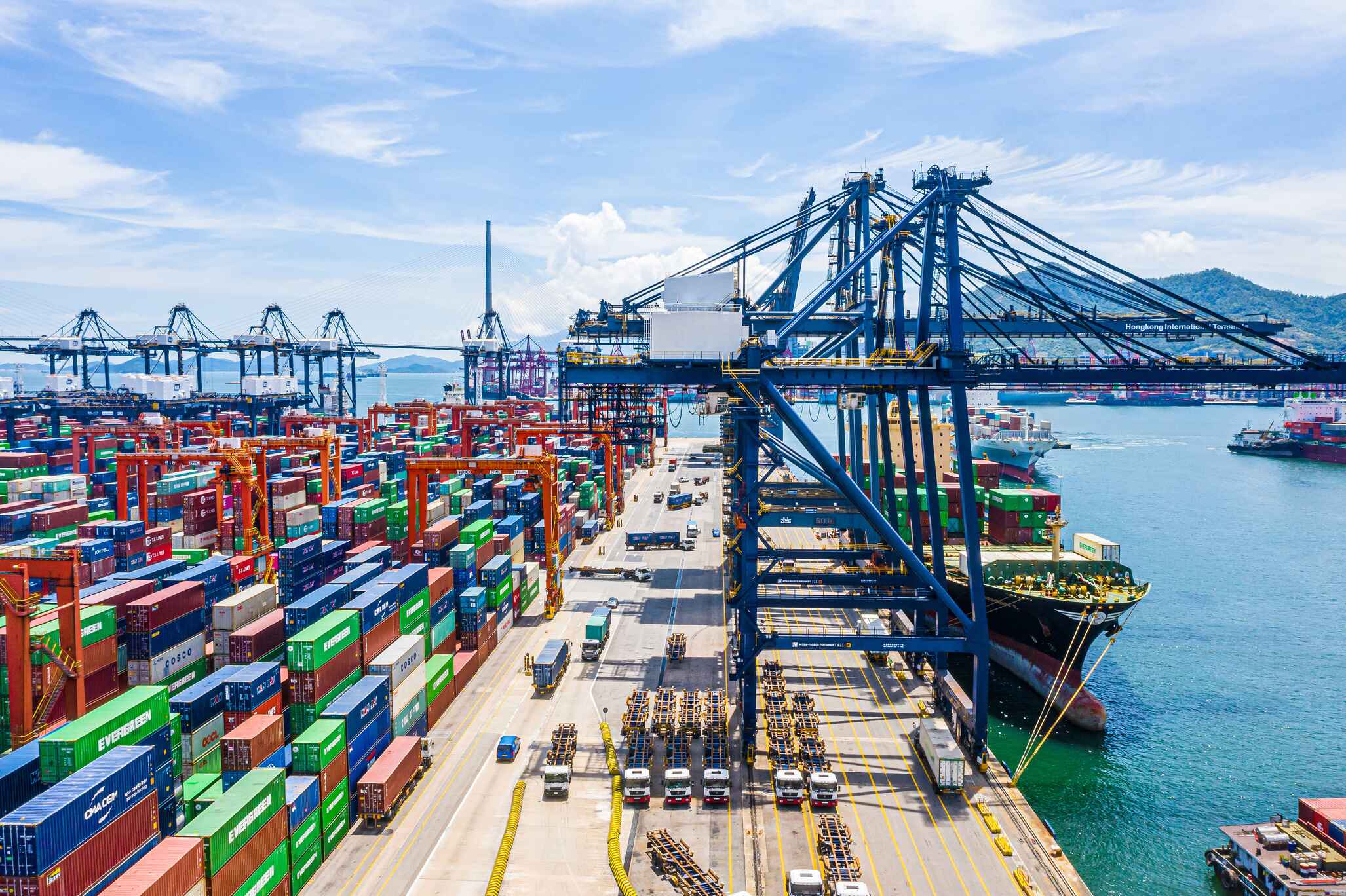

Marine litter and pollution have severely damaged the marine environment. Although land-based sources contributes about 80% to marine litter, sea-based sources must also be taken into account to directly maintain the marine environment and protect human health. Marine litter and pollution increase the acidity of oceans, chemical contamination of the food chain, and the deaths of marine animals. Provision of reasonably cost-effective port waste reception facilities should be promoted to reduce sea-based marine pollution.
The International Convention for the Prevention of Pollution from Ships (MARPOL) proposes restrictions on waste discharges from ships at sea. It contains annexes introducing the need to provide port waste reception facilities for certain types of waste without causing undue delays to ships: Annex I for oil and oily water, Annex II for noxious liquid substances in bulk, Annex III for harmful substances carried by sea in packaged form, Annex IV for sewage from ships, Annex V for garbage from ships, and Annex VI for air pollution from ships.
MARPOL emphasises port waste reception facilities must have a range of adequacies: the facilities must be enough to accommodate all ship waste, not create undue delays for vessels that use them, contain enough information so ship authorities are aware of their existence and are encouraged to use them, and are developed regionally to establish cooperation with other ports within a country. Authorities must ensure the technological requirements of reception facilities are followed in accordance with end disposal and residue management.
In general, reception facilities must provide three main services: waste receptacles, collection facilities, and recycling and/or final disposal facilities. The three facilities must be capable of handling all waste. For receptacle facilities, adequate size, space, and number is required to accommodate seasonal variations in the demand for waste disposal.
After ratifying MARPOL Annex V, the Indonesian government issued Presidential Decree No 46/1986, which requires the provision of waste storage facilities in ports. The Ministry of Transportation released Decree of Minister of Transportation on Procurement of Waste Collection Facilities from Ships No. 215/1987, which obliged the ports of Belawan, Tanjung Priok, Tanjung Perak, and Makassar to set up reception facilities starting 1 April 1988.
Setting up reception facilities in Indonesian ports, however, is challenging. In Belawan port, the reception facilities still do not have a permit to operate, thus overall waste management cannot be optimally performed. In Tanjung Priok port, some vessels remain unserved as a result of late notification which, based on regulations, must be served at least two days before the arrival date. The port is also sometimes full of Indonesian Army ships, hampering waste transporter ships from quickly unloading waste. The Makassar port has yet to establish port waste reception facilities, and so its oil waste is collected by private companies.
Singapore enacted the Prevention of Pollution of the Sea (Reception Facilities and Garbage Facilities) Regulations in 1991, requiring every port in the country to have adequate reception facilities able to accommodate waste. Singapore has the biggest MARPOL Annex I reception facilities with advanced technologies mainly established to tackle oil and oily wastewater. The facilities consist of two main treatments: oil sludge and slot treatment, both operating at high capacity. Singapore has worked with the Indonesian and Malaysian governments to provide a port reception facilities booklet for the Straits of Malacca and Singapore. The booklet provides information on reception facilities in the area, such as prior notification for ships, communication, types of facility, and waste capacity.
Waste reception facilities are not only essential for ports on oceans and seas but also on rivers. The Mekong River passes through China, Myanmar, Lao PDR, Thailand, Viet Nam, and Cambodia. As a trans-boundary river, it plays a fundamental roles in transporting people and cargo to support international trade and tourism – about 73% of cargo is transported by water In Viet Nam. Inevitably, high traffic on the Mekong River leads to ship-generated wastes, such as bilge water, domestic and operational waste, and cargo-related waste.
Unfortunately, the river has no waste reception facilities or waste management guidelines. Thus, liquid and solid waste generated from shipping are disposed into the river and then carried away by wind or waves to distant locations.
I Ball, (1999), ‘Port Waste Reception Facilities in UK Ports’, Marine Policy, 23(4–5), 307–327. doi: 10.1016/s0308-597x(98)00057-8.
European Parliament (2019), Port Reception Facilities for Ship Waste: Collecting Waste from Ships in Ports. http://www.europarl.europa.eu/RegData/etudes/BRIE/2019/633180/EPRS_BRI(2019)633180_EN.pdf (accessed 10 January 2020).
Government of Singapore (1991), Prevention of Pollution of the Sea (Reception Facilities and Garbage Facilities) Regulations. https://sso.agc.gov.sg/SL/PPSA1990-RG4?DocDate=20170907 (accessed 14 January 2020).
International Maritime Organisation (IMO) (2000), International Convention for the Prevention of Pollution from Ships MARPOL Version 1.0. https://www3.ufpe.br/engnaval/images/pdf/Normas/Marpol/marpol_7378_parta.pdf (accessed 16 October 2019).
Minister of Transportation of the Republic of Indonesia (1987), Decree of the Minister of Transportation No 215/1987 on Procurement of Waste Collection Facilities from Ships. (accessed 29 November 2019). https://andalalin.files.wordpress.com/2014/07/kepmen-perhubungan-n0-215-th-1987-pengadaan-fasilitas-penampungan-limbah-dr-kapal.pdf (accessed 29 November 2019).
Mekong River Commission (nd), Waste Management Guidelines: Prepared for Chiang Saen Commercial Port Area. http://www.mrcmekong.org/assets/Publications/basin-reports/Waste-Management-Guidelines-Sept2013.pdf (accessed 15 January 2020).
Mekong River Commission (nd), Mekong Vessel Inspection Scheme: Prepared for Chiang Saen Commercial Port Area. http://www.mrcmekong.org/assets/Publications/basin-reports/Waste-Management-Guidelines-Sept2013.pdf (accessed 16 January 2020).
Mekong River Commission (nd), River Transport. http://www.mrcmekong.org/topics/river-transport/ (accessed 16 January 2020).
PT Pelabuhan Indonesia II (2018), Priok Perketat Bongkar Limbah. (Priok is Tightening Waste Disassembly). http://bumn.go.id/pelindo2/berita/0-Priok-Perketat-Bongkar-Limbah (accessed 14 January 2020).
M F Rozali, (nd), An Update on The Port Reception Facilities in The Straits of Malacca and Singapore. http://www.cm-soms.com/uploads/2/72/CF5.1.3%20An%20Updates%20on%20Port%20Reception%20Facilities_Malaysia.pdf (accessed 14 January 2020).
Singapore Cleanseas (2015), Reception Facilities. https://www.cleanseas.com.sg/reception.htm (accessed 14 January 2020).
T K Utami, and F S Purinigsih (2013a), Kajian Pemanfaatan Reception Facilities di Pelabuhan Belawan. (Study of Use of Utilisation of Reception Facilities at the Belawan Ports). (accessed 2 December 2019). http://ojs.balitbanghub.dephub.go.id/index.php/warlit/article/download/705/430 (accessed 2 December 2019).
T K Utami, and F S Purinigsih (2013b), Kajian Pemanfaatan Reception Facilities di Pelabuhan Makassar. (Study of Use of Utilisation of Reception Facilities at the Makassar Ports). http://ojs.balitbanghub.dephub.go.id/index.php/warlit/article/download/728/453 (accessed 2 December 2019).